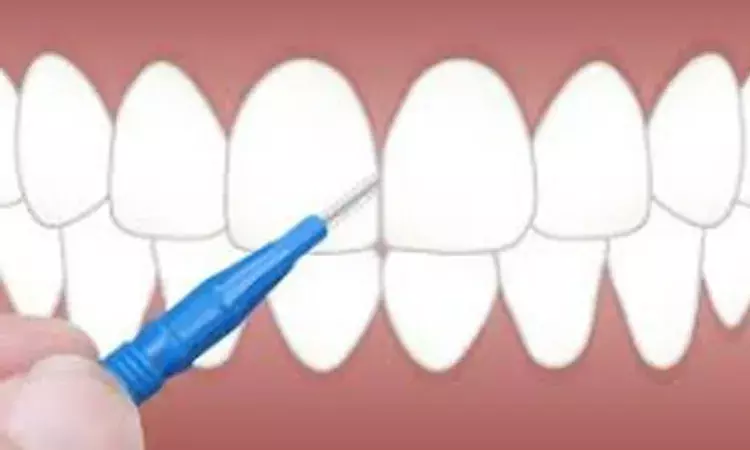- Home
- Medical news & Guidelines
- Anesthesiology
- Cardiology and CTVS
- Critical Care
- Dentistry
- Dermatology
- Diabetes and Endocrinology
- ENT
- Gastroenterology
- Medicine
- Nephrology
- Neurology
- Obstretics-Gynaecology
- Oncology
- Ophthalmology
- Orthopaedics
- Pediatrics-Neonatology
- Psychiatry
- Pulmonology
- Radiology
- Surgery
- Urology
- Laboratory Medicine
- Diet
- Nursing
- Paramedical
- Physiotherapy
- Health news
- Fact Check
- Bone Health Fact Check
- Brain Health Fact Check
- Cancer Related Fact Check
- Child Care Fact Check
- Dental and oral health fact check
- Diabetes and metabolic health fact check
- Diet and Nutrition Fact Check
- Eye and ENT Care Fact Check
- Fitness fact check
- Gut health fact check
- Heart health fact check
- Kidney health fact check
- Medical education fact check
- Men's health fact check
- Respiratory fact check
- Skin and hair care fact check
- Vaccine and Immunization fact check
- Women's health fact check
- AYUSH
- State News
- Andaman and Nicobar Islands
- Andhra Pradesh
- Arunachal Pradesh
- Assam
- Bihar
- Chandigarh
- Chattisgarh
- Dadra and Nagar Haveli
- Daman and Diu
- Delhi
- Goa
- Gujarat
- Haryana
- Himachal Pradesh
- Jammu & Kashmir
- Jharkhand
- Karnataka
- Kerala
- Ladakh
- Lakshadweep
- Madhya Pradesh
- Maharashtra
- Manipur
- Meghalaya
- Mizoram
- Nagaland
- Odisha
- Puducherry
- Punjab
- Rajasthan
- Sikkim
- Tamil Nadu
- Telangana
- Tripura
- Uttar Pradesh
- Uttrakhand
- West Bengal
- Medical Education
- Industry
High-speed dental handpiece with coolant delivery limits aerosol contamination

Electric micromotor handpieces which use water-jet coolant alone without compressed air produce localized (within treatment bay) droplet contamination but are unlikely to produce aerosol contamination beyond the immediate treatment area, finds a study.
The study is published in the Journal of Dentistry.
High-speed dental instruments produce aerosol and droplets. James R Allison et al from the School of Dental Sciences, Faculty of Medical Sciences, Newcastle University, United Kingdom carried out the present study with the objective to evaluate aerosol and droplet production from a novel electric micromotor handpiece (without compressed air coolant) in real world clinical settings.
The authors performed 10-minute upper incisor crown preparations in triplicate in an open-plan clinic with mechanical ventilation providing 3.45 air changes per hour. A 1:5 ratio electric micromotor handpiece which allows water coolant without compressed air (Ti-Max Z95L, NSK) was used at three speeds: 60,000 (60 K), 120,000 (120 K), and 200,000 (200 K) revolutions per minute.
Coolant solutions contained fluorescein sodium as a tracer (2.65 mmol L − 1). High-speed air-turbine positive control, and negative control conditions were conducted. Aerosol production was evaluated at 3 locations (0.5 m, 1.5 m, and 1.7 m) using: (1) an optical particle counter (OPC; 3016-IAQ, Lighthouse) to detect all aerosol; and (2) a liquid cyclone air sampler (BioSampler, SKC Ltd.) to detect aerosolised fluorescein, which was quantified by spectrofluorometric analysis.
Settled droplets were detected by spectrofluorometric analysis of filter papers placed onto a rig across the open-plan clinic in the study.
The following findings were observed-
- Local (within treatment bay) settled droplet contamination was elevated above negative control for all conditions, with no difference between conditions.
- Settled droplet contamination was not detected above negative controls outside the treatment bay for any condition.
- Aerosol detection at 1.5 m and 1.7 m, was only increased for the air-turbine positive control condition.
- At 0.5 m, aerosol levels were highly elevated for the air-turbine, minimally elevated for 200 K and 120 K, and not elevated for 60 K.
Hence, the authors concluded that "electric micromotor handpieces which use water-jet coolant alone without compressed air produce localized (within treatment bay) droplet contamination, but are unlikely to produce aerosol contamination beyond the immediate treatment area (1.5 m), allowing them to be used safely in most open-plan clinic settings."
Dr. Nandita Mohan is a practicing pediatric dentist with more than 5 years of clinical work experience. Along with this, she is equally interested in keeping herself up to date about the latest developments in the field of medicine and dentistry which is the driving force for her to be in association with Medical Dialogues. She also has her name attached with many publications; both national and international. She has pursued her BDS from Rajiv Gandhi University of Health Sciences, Bangalore and later went to enter her dream specialty (MDS) in the Department of Pedodontics and Preventive Dentistry from Pt. B.D. Sharma University of Health Sciences. Through all the years of experience, her core interest in learning something new has never stopped. She can be contacted at editorial@medicaldialogues.in. Contact no. 011-43720751
Dr Kamal Kant Kohli-MBBS, DTCD- a chest specialist with more than 30 years of practice and a flair for writing clinical articles, Dr Kamal Kant Kohli joined Medical Dialogues as a Chief Editor of Medical News. Besides writing articles, as an editor, he proofreads and verifies all the medical content published on Medical Dialogues including those coming from journals, studies,medical conferences,guidelines etc. Email: drkohli@medicaldialogues.in. Contact no. 011-43720751


